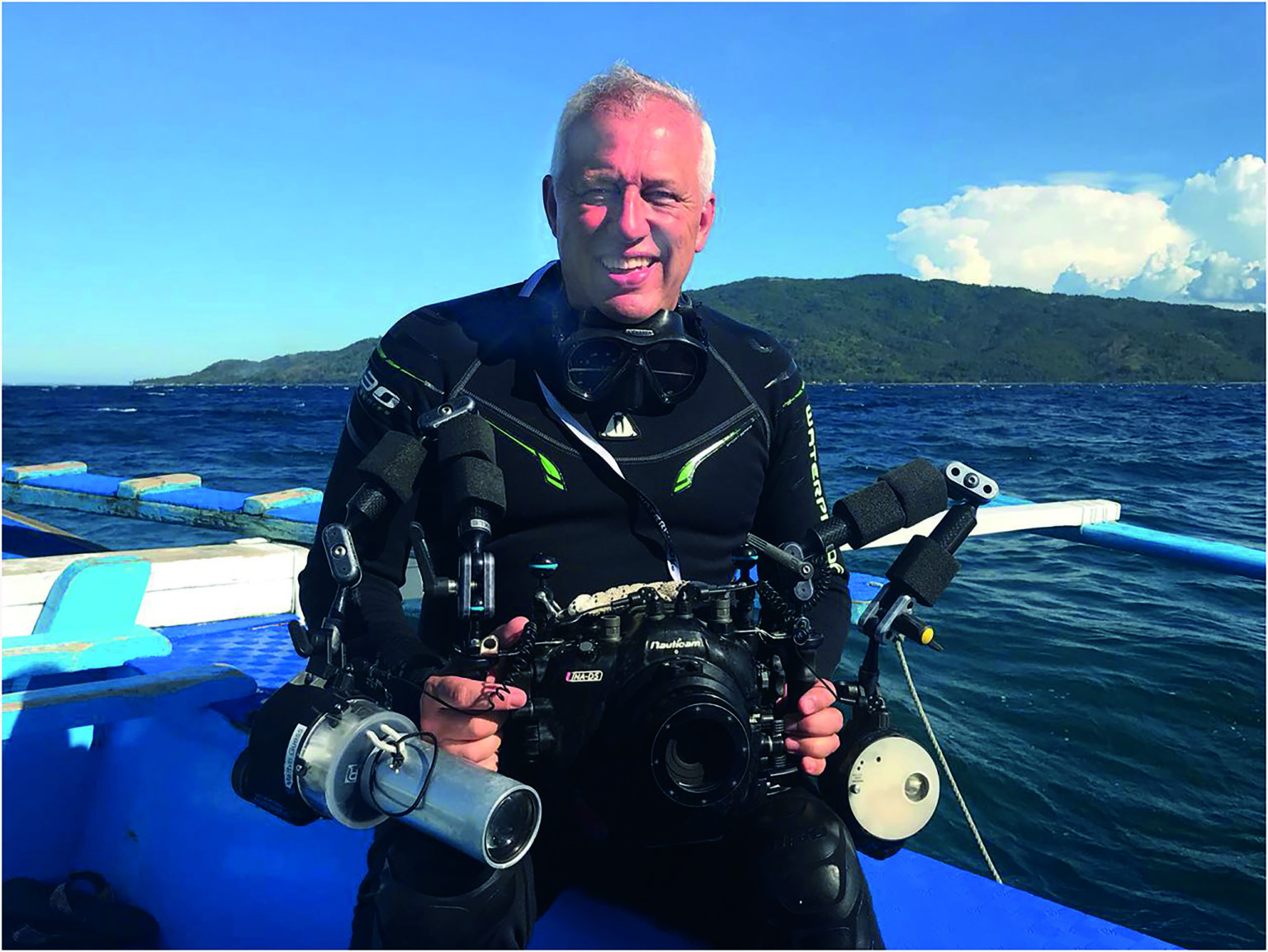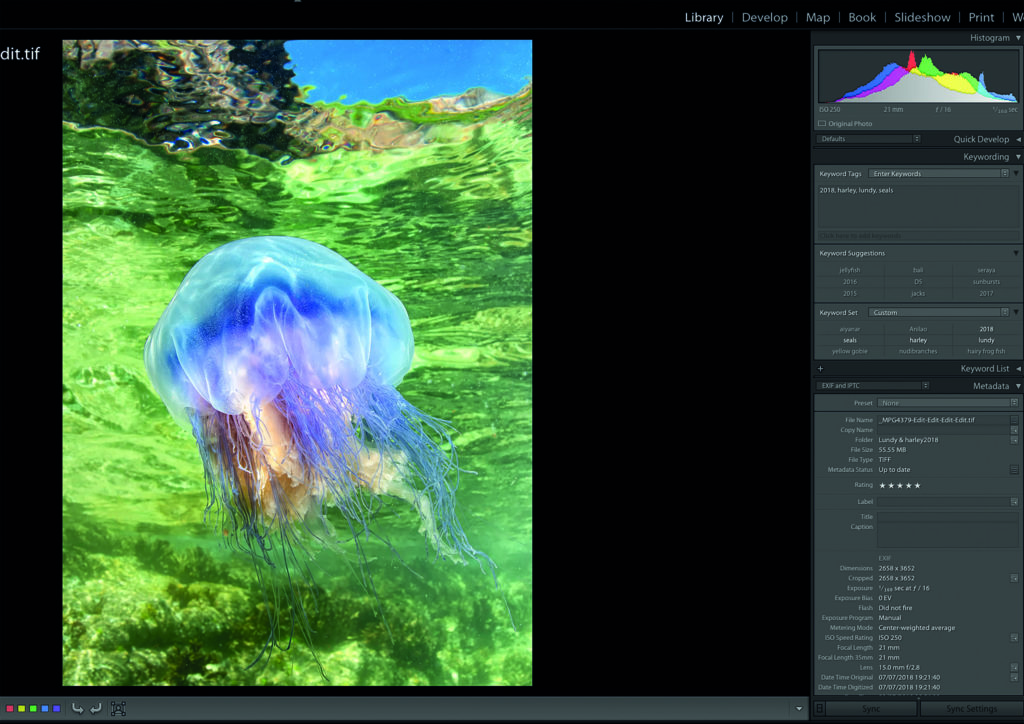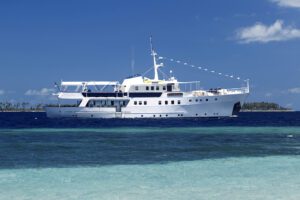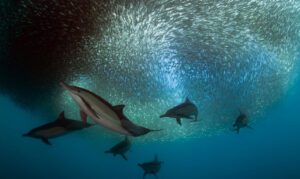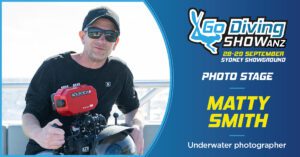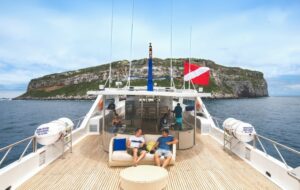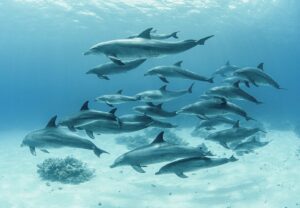Following his last article on underwater composition, Martyn Guess provides some more tips on how we can all get better underwater images.
If you study a good underwater image and look at the components that help it to be memorable – whether it be an interesting subject exhibiting some particular behaviour, or maybe something brightly coloured or lit in a different way – if it isn’t well exposed, the picture simply won’t stand out and command attention from the viewer and you, the photographer, will be disappointed.
In this article, I want to look at how to get the best exposure and to be sure it is right underwater.
Exposure
In any type of photography, exposure is a critical element that dictates what is recorded on a camera’s sensor. There are three elements that control exposure excluding your strobe power – Aperture (F stops), Shutter speed and ISO (your camera’s sensor’s sensitivity to light). In a previous article in this magazine, I discussed how important it is to take control of these elements of exposure by using the camera’s manual setting.
Without this, you cannot choose the combination of aperture, speed and ISO that will give you the best exposure for the picture you want to create, whether it is a sharp macro image using a small aperture, a wide-angle shot of a reef scene with a natural-looking blue background, using a lower speed or a slow-motion shot of a shark with motion blur, using a very slow speed or a slightly out-of-focus bokeh macro shot, using a large aperture.

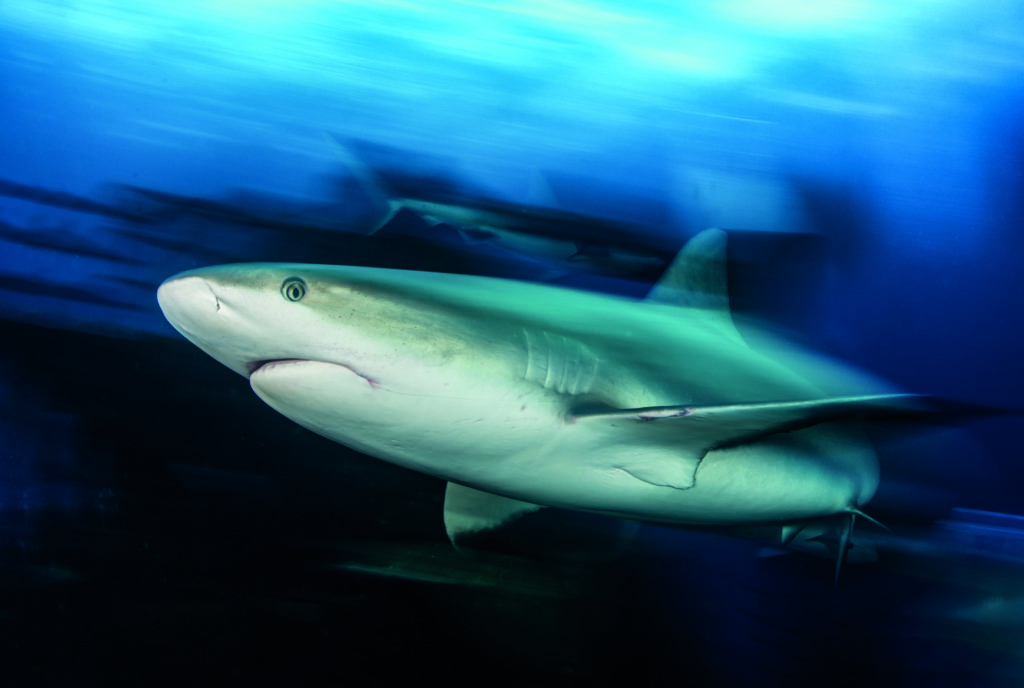
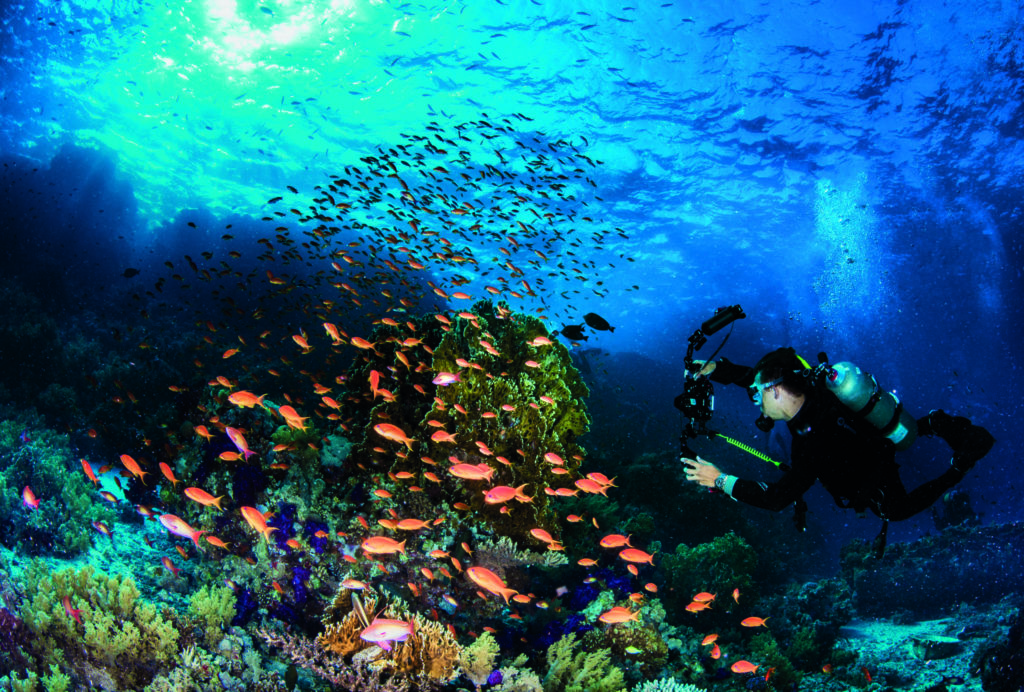
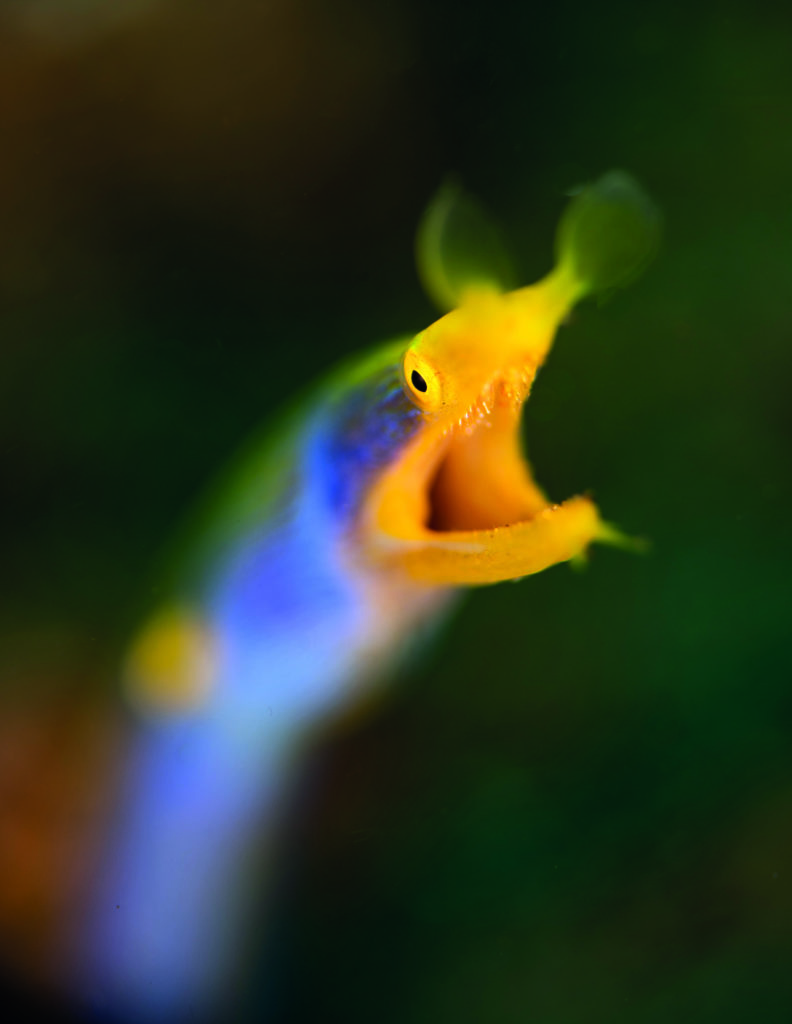
The Exposure Triangle
Creating an exposure which is harmonious using the three elements is a fine balancing act. Once you have made a decision about one element, say aperture for depth of field reasons, then you will have to adjust the other two. It is very important to get all three elements in harmony together and spending some time understanding this will have massive benefits as your photography progresses.
Aperture
Controls the lens diaphragm, which controls the amount of light getting through to the camera sensor. It also controls depth of field (DOF), the amount of the picture in focus from foreground to background. A small aperture or high F-stop, such as F22, will give you the biggest DOF, but the smallest amount of light getting through so will require an adjustment of the speed and/or ISO to get more light to the subject and more strobe power. A big aperture or small F-stop, such as F4, will blur the background and give you some nice bokeh, but will let a lot more light get to the sensor so again will require the speed and or ISO to be adjusted and the strobe power to be turned down.
Shutter speed
Is the speed at which the camera’s curtain opens and shuts and thus controls the amount of time that the light hits the sensor. It is important in freezing the action with moving subjects and with underwater photography generally to freeze the shot when we are swaying around – it is almost impossible to be as still underwater as it is on land! If you have to use a faster shutter speed to freeze the action, then you will have to adjust to a bigger aperture (smaller F-stop) to allow more light in or increase the ISO.
With underwater photography, there are other aspects to take into account. Speed can control the background water colour. A lower speed will give you a lighter colour be it blue or green water, and a higher speed the converse. When using dome ports, it is best not to use too wide apertures as the corners of the images will not be sharp, this is particularly the case with full-frame cameras so lower speeds or higher ISO settings, or a combination of both can help once a smaller aperture is set.
ISO is how sensitive your camera’s sensor is to light. Each ISO number, higher or lower, is a doubling or halving of the sensor’s sensitivity to light. Beware however that higher ISO numbers will start to introduce digital noise and degrade the image quality, so be aware of the optimum range of ISO for your particular camera. More recent cameras can handle higher ISO numbers very well and thus ISO is a very useful tool in the Exposure triangle as it lets you choose the optimum combination of aperture and speed.
Correct use of the Exposure Triangle lets you decide how to adjust the triangle. Referring to the diagram when you increase the exposure for one element (green arrows), you need to adjust it for one or both of the others (red arrows) If you can master this relationship, you will have control over the images that you create.
Histograms and LCD
The most valuable tool we have on our digital cameras to help us get the exposure right is the Histogram setting. But before I explain a little more about how to use Histograms, I want to talk about the LCD.
It’s a brilliant feature when compared to film days when you had no idea whether your images worked or not until much later after the dive, and often weeks later when the film was processed. However, while it works perfectly on land, underwater the LCD-reviewed image can appear much brighter than it actually is.
Remember we are shooting images at depth underwater and the ambient light is far less than at the surface. When you see your image on the LCD at depth, it will definitely look brighter than reality because the surrounding light is darker, and this will give you an inaccurate interpretation of the reality.
How often have you got back from a dive and the pictures are disappointing because they are too dark? One solution to help is to turn the brightness of your LCD down. I turn mine down by -1 for daylight and -2 for night dives. Experiment and work out what’s best for you.
The best solution to fully understand whether the image you have taken is best exposed is to use the camera’s Histogram. Because I use them all the time, I have set my camera up so that I can easily review the histogram for each image by a thumb press on the rear multi-function button. Check out your camera instructions to see how you do this on your camera. I review my Histograms religiously. I have learnt to read them and understand what they show.
A Histogram is a graphical representation of the tonal values of your image. It shows the tonal values of the brightness in your image, varying from 0% black on the far left of the graph to 100% white on the far-right hand side. People often look at the Histogram and are totally confused by what it represents. However, if you look at the picture of the screen grab from my computer of the jellyfish you will see that the Histogram in the top right-hand side shows a neat pyramid. This is pretty much the perfect exposure. The graph reaches fully from edge to edge without a space on one side or another. It just touches the left- and right-hand edges and does not spill up the sides.
If the Histogram goes up right on the right-hand axis of the graph this means that some pixels have been burnt out. If it goes up on the left-hand side, then these pixels are black. Of course, not all Histograms are perfect pyramids. Some images such as macro shots with black backgrounds will be biased towards the left-hand side and those with a lot of white will be biased towards the right-hand axis. They are very useful tools though in determining underwater whether the exposure needs to be adjusted or whether the strobe power needs to be increased.
While on first glance all of this might seem complicated, I recommend you practise different combinations of settings to achieve a good exposure and Histogram on the surface before you dive next. Learn the effect of adjusting speed and ISO with different apertures and strobe power and check your Histograms regularly and your pictures will soon be far better exposed on a more-regular basis.
MY ESCORTED TRIPS
Want to learn how to take or improve your underwater images? Why not come on a photo-specific trip? These trips are meticulously planned to the best destinations at the best time of year where the conditions should be perfect for building a portfolio of great images.
The workshops, which are for all levels of experience but mainly aimed at people with a few trips under their belts, include classroom sessions and presentations as well as in-water help and guidance, all done in a relaxed and non-competitive friendly environment.
I am leading a trip for Scuba Travel to Lembeh Resort in Indonesia in Oct/Nov 2022.
Photographs by Martyn Guess
